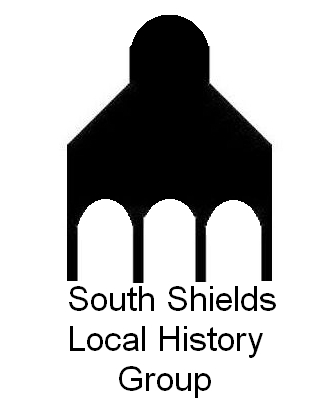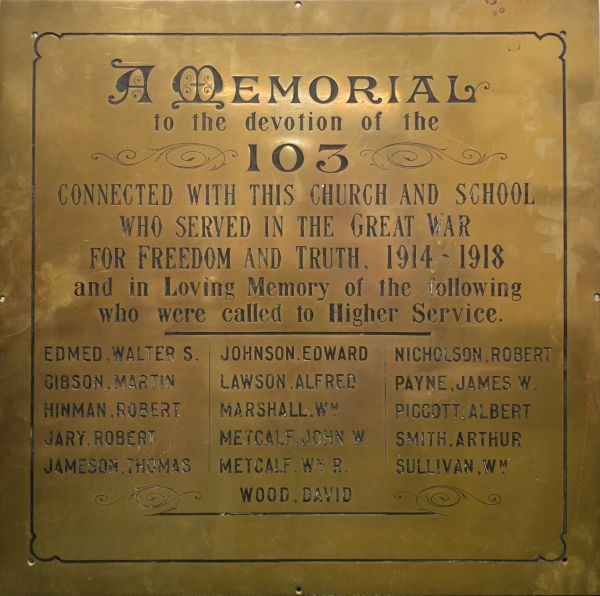
Terry Ford on how the plaque was found:
I was contacted through the Local History Group’s website by Trevor Harkin, a Coventry based local historian. He had spotted a World War I memorial plaque from Queen Street Methodist Chapel in South Shields. Trevor contacted the Dominic Winter Auction site who were selling the plaque on behalf of the plaque owner. I became involved as did the War Memorials Trust and North-East War Memorials Project. Henry Meadows on behalf of the auctioneers kindly negotiated with the seller of the plaque to remove it from the auction. I started looking for a suitable site for the plaque. Adam Bell from South Shields Museum kindly offered to temporarily store the plaque until a better permanent location for it to be displayed could be found.

Queen Street Methodist Church was just behind King Street and on the corner of Salem Street opposite the Royal British Legion Club. In 1943 it ceased being a chapel and became the Merchant Navy Club then later it was Blundell’s furniture shop. It was demolished about 1970.
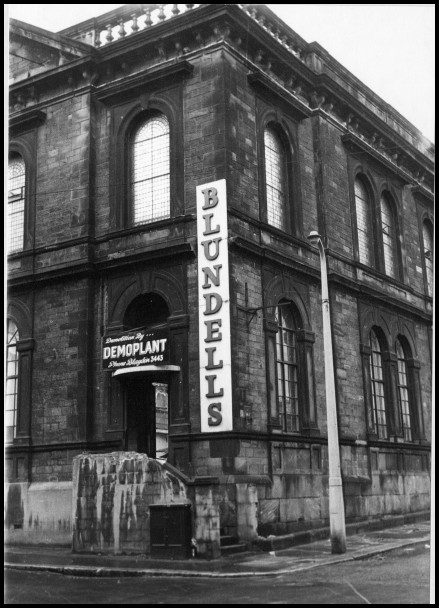
The plaque is made of brass, is two feet square and was originally unveiled by Lieutenant Colonel Robert Chapman in 1920. Colonel Chapman’s grandson, Sir David Chapman, has kindly offered to be part of the unveiling ceremony when the plaque is displayed in Shields.

The plaque commemorates the 103 men who served in the War and the 16 men who died who had a connection to the Chapel.
The sixteen men
With one exception, it has been possible to trace who these men were, although this would not have been possible without the assistance of Peter Hoy’s massive and informative World War I database. It has even been possible to locate photographs of half of the men.
Of the fifteen, two were lost at sea. Two of the men were (incredibly) killed in the same battle on the same day. Two of the men had been local goalkeepers. The bodies of five of them were never found, and, in two cases, their families were still writing for news about them up to a year later. One man never left England, dying a year after the war was over.
Four were married (two of whom married during the war). Their occupations were: house-painter; brass moulder; chauffeur; cabinet maker; upholsterer; clerk (two); teacher; butcher; marine engineer (two); riveter; library assistant; and bricklayer (two). Two worked for their fathers. One of them had been to the University of Cambridge. Two, a 3 father and son, had returned from Canada to fight. The youngest was 17 when the war started; the oldest was 41. Most died in France and Flanders, but one died in the Balkans, and was buried in Greece. One won the M.C.
The great majority of the men lived within easy walking distance of Queen Street: Hedley Street, Cleveland Road, Catherine Street (two), Alderson Street, Salmon Street, Sea View Terrace, Victoria Place, Roman Road, Fort Street. Two lived near each other in Westoe: Hepscott Terrace, Sunderland Road. One of them was the deputy organist at Queen Street (his teacher was Robert Reah, a prominent member of the Methodist community). Another was the son of a Queen Street preacher of thirty years’ standing.
The first to die in battle, died in September 1915. The last one died in September 1918. One of the soldiers, Tom Jameson, the son of local upholsterer Joseph Jameson, who spent almost forty years of his life preaching at Queen Street, died in 1919. Quite how he was accepted into the army is a mystery – he’d had rheumatic fever as a child. He was discharged in 1916, having travelled, it seems, no further than Hexham. “Unfit for any employment,” suggested a doctor. A series of discussions is implied in the surviving papers, the authorities at first rejecting his claim to a pension and then capitulating.
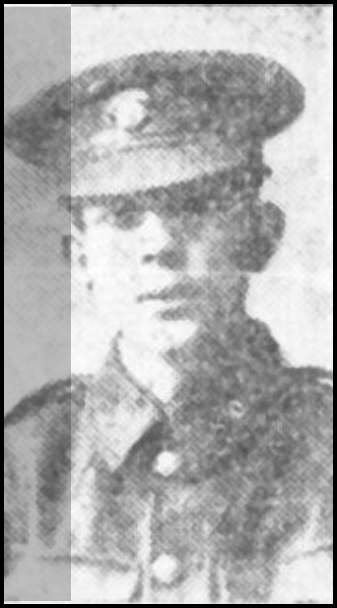
Two men on the plaque were father and son, William Metcalf and John Metcalf. They had both returned to South Shields from Canada, where they had been since about 1908. Both were gunners. William was killed in 1916, while preparing for an assault; John died in September 1918, after his shrapnel-shattered right leg was amputated in a hospital near Calais.

Robert Hinman was 33 at the start of the war, a cabinet-maker. He lived with his wife and two young sons in Roman Road. As a younger man, he’d been a goalkeeper for South Shields Athletic. In April 1918, by then a Sergeant in the Northumberland Fusiliers, he was killed in the trenches – there are no details how.

Another married man, Martin Gibson – who had, oddly enough, been a goalkeeper for South Shields Parkside – was killed in the Balkan conflict in 1916, which pitted his regiment against the Bulgarians. He and his family, including a young son and daughter, lived in Beacon Street.
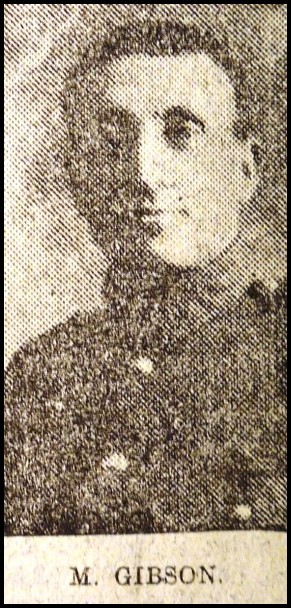
Robert Jary was a bricklayer, working for his father. They lived in Catherine Street. He was killed on June 16th, as his DLI company prepared for the Somme. Also from Catherine Street was apprentice butcher Albert Pigott. He too was killed in 1916, in the run-up to the Somme. His body was never found. This was also the fate, a year earlier, of
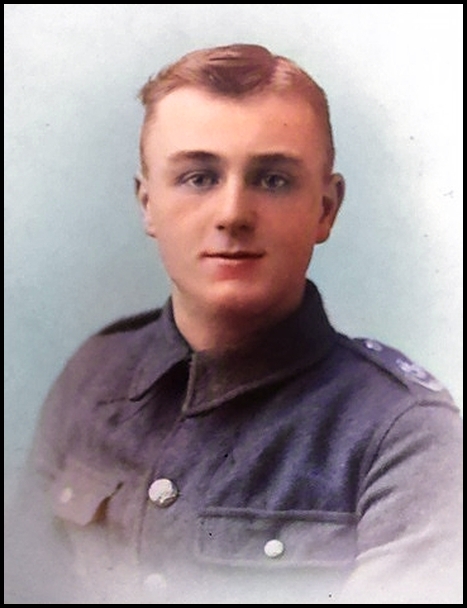
Ned Johnson, a riveter at Readhead’s. In his case it was at the Battle of Loos, where the British first used gas. Ned’s brother and father continued to write anxiously to the military authorities a year later. They received (through a third party) letters, some bloodstained, taken from his body by another soldier.

Two of the sixteen men died at sea. Both were engineers. William Sullivan was an only child. He and his parents lived in Queen Street, just along from the Methodist Chapel. His ship, S.S. Port Echunga, was torpedoed in September 1917 by a U-boat in the English Channel, after a voyage from Texas. Robert Nicholson, originally from Fort Street, but after marrying in 1909, he, his wife and little daughter lived in Salmon Street. His ship, S.S. Batoum, its cargo fuel oil, was torpedoed in July 1915; Robert and five others were killed.
Walter Edmed, whose father had emigrated to Butler, Pennsylvania in 1890, where Walter was born, had died that very year, and his mother Kate had been forced to return to South Shields, where she later re married. She had seven other children, and the family lived in Hedley Street. Walter, a house-painter, was killed on 14 April 1917 at the Battle of Arras. He was unmarried, but he had a sweetheart, Maggie Habbershaw, of Heugh Terrace, who kept up In Memoriam messages until she married in 1920.
On the same day he was killed, so too was James Payne, also in the DLI, and also at Arras. James was a second lieutenant. Before the war he had been the deputy organist at Queen Street and had been taught music by Robert Reah, well-known in Shields. He had gone on to complete a mathematics degree at Emmanuel College, Cambridge, and to have gained a post as a maths and music teacher in South Wales (at Cowbridge). His father was a successful house-builder. They lived on Sunderland Road (opposite where Readhead Park is).

Arthur Smith was a chartered accountant’s clerk – the CA being his father, William Arthur Smith, well-known in Shields as a member of the School Board. The family lived at 24 Sea View Terrace. Arthur seems to 5 have enlisted in March 1918 and to have died in France in August in unexplained circumstances. His younger brother had died in 13, aged 15. An elder sister survived him. David Wood had been a library assistant. Constantly in trouble for going AWOL, he married a local girl, Mary Ann Waitt Smith, in early 1916. They lived in Alderson St. After suffering from trench foot (and hands), he was reported missing in Belgium in March 1918. His body was lost, and his death ‘accepted for official purposes’.
Alf Lawson – a grandson of the founder of the Lawson Tugboat Company – had been working as a clerk in the NE Railway offices since he was 14. In 1914, his family lived in Hepscott Terrace. In 1915, he was commissioned as a second lieutenant. In September, at the battle of Flers Courcelotte, he led his platoon in an attack on a German trench system. They met a ‘wall of murderous fire’, and Alf was shot in the head by a sniper. A colleague wrote to his father that he had been next to him when he died. ‘I am sure he had no pain and died like hero…’ Alf was awarded a posthumous Military Cross.
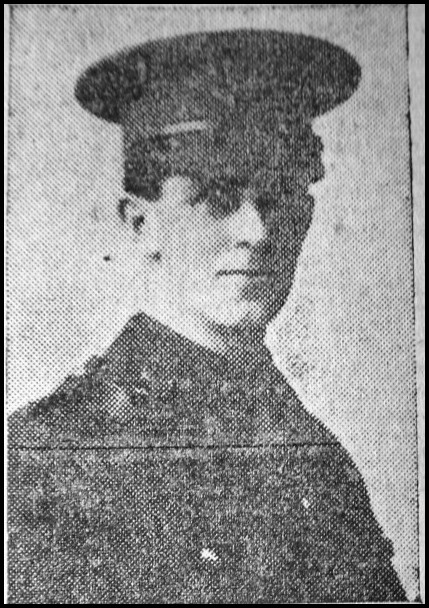
The sixteenth man named, William Marshall, currently eludes me. It is a remarkably common name – 250 soldiers and sailors shared it. Even in South Shields, there are several possibilities, one being from a pilot’s family. There are seventeen William Marshalls born in South Shields in the appropriate period.
If you recognise any of these men as members of your family, please do get in touch via the website contact form.
Full list of men with regimental/ memorial details
Lance-Corporal Walter Samuel Edmed, 1st/6th DLI, 14 April 1917, aged 26. Arras Memorial. Bay 8. (No. 1533).
Private Martin Gibson, 3/Dorsetshire Regt., 3 October 1916, aged 34. Struma Military Cemetery, Greece. III.J.12. (No. 437).
Sergeant Robert Hinman, 9/Northumberland Fusiliers, 11 April 1918, aged 36. Ploegsteert Memorial, Belgium. Panel 2. (No. 1613).
Private Robert Jary, 15/DLI, 7 June 1916, aged 26. Dartmoor Cemetery, Becordel-Becourt. I.E.37. (No. 46).
Private Thomas Jameson, 4/Northumberland Fusiliers, 29 July 1919, aged 25. Harton Cemetery, South Shields. E.3761. (No. 3838).
Private Edward [Ned] Johnson, 15/DLI, 25 September 1915, aged 24. Loos Memorial. Panel 107. (No. 20).
2nd-Lieutenant Alfred Lawson, 1st/9th DLI, 16 September 1916, aged 24. Thiepval Memorial. Pier and Face 14A. (No. 3795).
William Marshall. (not yet known)
Gunner John William Ray Metcalfe, 2nd Brigade, Canadian Field Artillery, Canadian Army, CEF, 29 September 1918, aged 21. Terlincthun British Cemetery, Wimille. IV.D.13. (No. 2856).
Gunner William Ray Metcalfe, 2nd Brigade, Canadian Field Artillery, Canadian Army, CEF, 14 September 1916, aged 42. Becourt Military Cemetery, Becordel-Becourt. I.W.11. (No. 2857).
Private David Wood, D Company (?), 7/Cameron Highlanders, 28 March 1918, aged 23. Arras Memorial. Bay 9. (No. 3837).
Second Engineer Robert Nicholson, SS ‘Batoum’ (Swansea), 18 July 1915, aged 33. Tower Hill Memorial, London. Panel 3. (No. 1286).
2nd-Lieutenant James William Payne, 1st/6th DLI, 14 April 1917, aged 25. Arras Memorial. Bay 8. (No. 3855).
Private Albert Pigott, 2/West Yorkshire Regt., 24 April 1918, aged 25. Pozieres Memorial. Panel 27. (No. 3880).
2nd-Lieutenant Arthur Smith, 10/Notts and Derby Regt (Sherwood Foresters), 26 August 1918, aged 24. Vis-en-Artois Memorial. Panel 7. (No. 12667).
Second Engineer William Sullivan, SS ‘Port Echunga’ (Port Adelaide), 5 September 1917, aged 32. Tower Hill Memorial, London. Panel 6. (No. 1314).
With thanks to Peter Hoy
Written by Bill Greenwell, SSLHG Newsletter Editor
